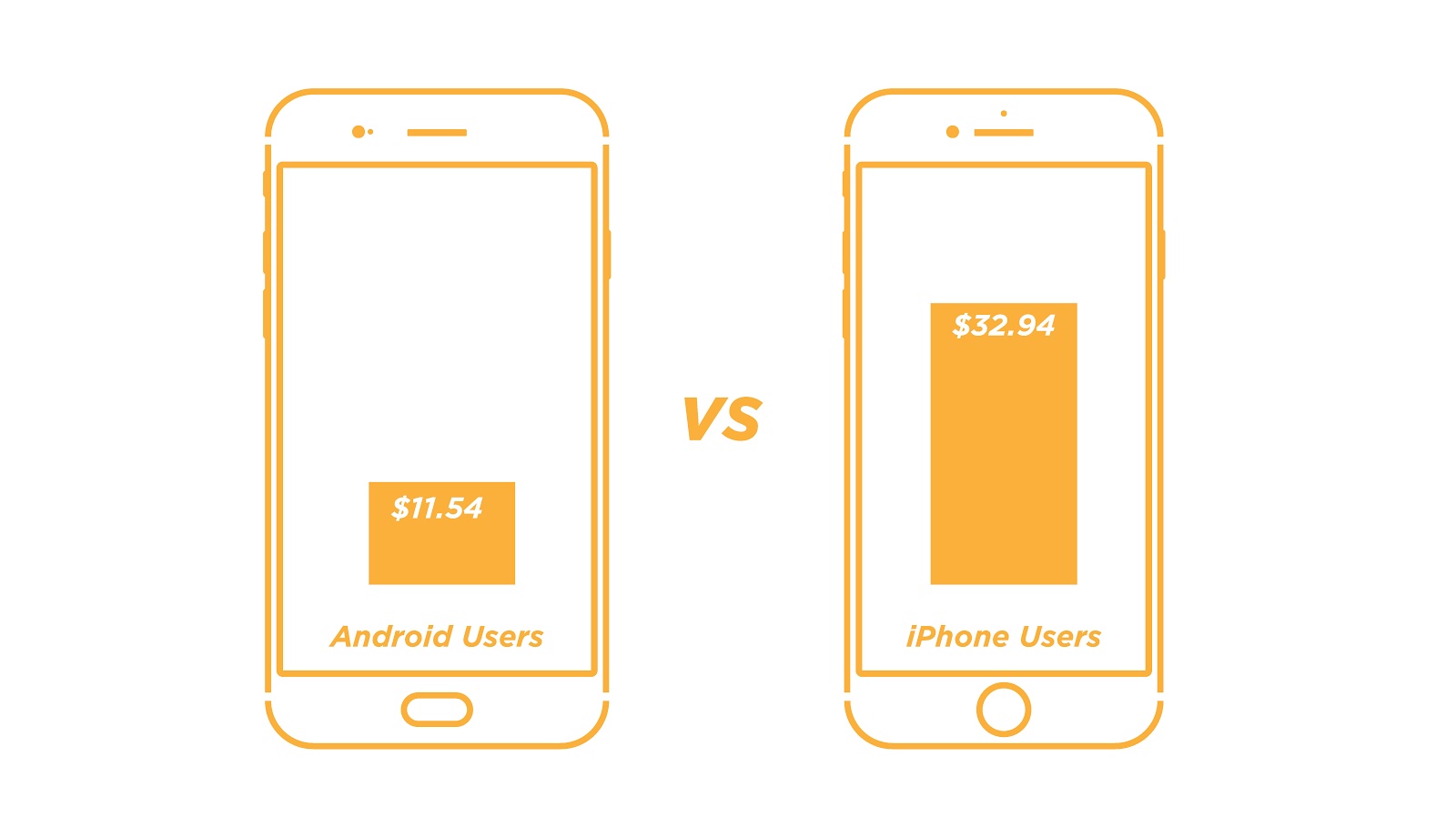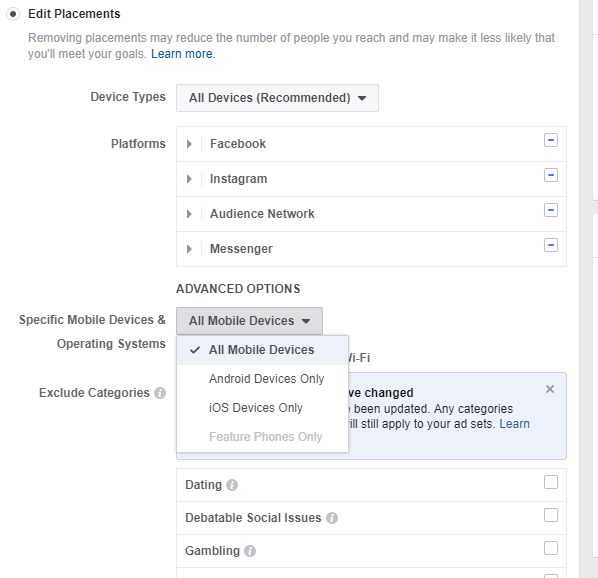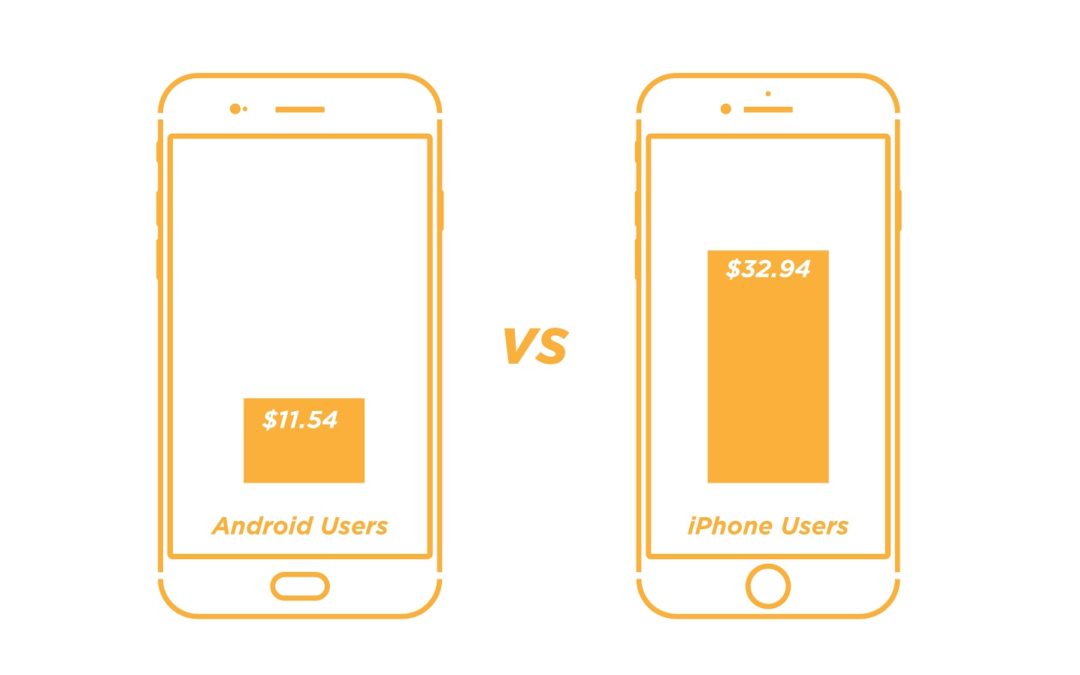Posted by MartyMeany
Apple has just launched their latest flagship phones to market and later this year they’ll release their uber-flagship: the iPhone X. The iPhone X is the most expensive iPhone yet, at a cool $999. With so many other smartphones on the market offering similar functionality, it begs the question: Do iPhone users simply spend more money than everyone else?
At Wolfgang Digital, we love a bit of data, so we’ve trawled through a massive dataset of 31 million iPhone and Android sessions to finally answer this question. Of course, we’ve got some actionable nuggets of digital marketing strategy at the end, too!
Why am I asking this question?
Way back when, before joining the online marketing world, I sold mobile phones. I couldn’t get my head around why people bought iPhones. They’re more expensive than their Android counterparts, which usually offer the same, if not increased, functionality (though you could argue the latter is subjective).
When I moved into the e-commerce department of the same phone retailer, my team would regularly grab a coffee and share little nuggets of interesting e-commerce trends we’d found. My personal favorite was a tale about Apple users spending more than desktop users. The story I read talked about how a hotel raised prices for people booking while using an Apple device. Even with the increased prices, conversion rates didn’t budge as the hotel raked in extra cash.
I’ve always said this story was anecdotal because I simply never saw the data to back it up. Still, it fascinated me.
Finding an answer
Fast forward a few years and I’m sitting in Wolfgang Digital behind the huge dataset that powered our 2017 E-Commerce Benchmark KPI Study. It occurred to me that this data could answer some of the great online questions I’d heard over the years. What better place to start than that tale of Apple users spending more money online than others?
The online world has changed a little since I first asked myself this question, so let’s take a fresh 2017 approach.
Do iPhone users spend more than Android users?
When this hypothesis first appeared, people were comparing Mac desktop users and PC desktop users, but the game has changed since then. To give the hypothesis a fresh 2017 look, we’re going to ask whether iPhone users spend more than Android users. Looking through the 31 million sessions on both iOS and Android operating systems, then filtering the data by mobile, it didn’t take long to find the the answer to this question that had followed me around for years. The results were astonishing:

On average, Android users spend $11.54 per transaction. iPhone users, on the other hand, spend a whopping $32.94 per transaction. That means iPhone users will spend almost three times as much as Android users when visiting an e-commerce site.
Slightly smug that I’ve finally answered my question, how do we turn this from being an interesting nugget of information to an actionable insight?
What does this mean for digital marketers?
As soon as you read about iPhone users spending three times more than Android users, I’m sure you started thinking about targeting users specifically based on their operating system. If iOS users are spending more money than their Android counterparts, doesn’t it make sense to shift your spend and targeting towards iOS users?
You’re right. In both Facebook and AdWords, you can use this information to your advantage.
Targeting operating systems within Facebook
Of the “big two” ad platforms, Facebook offers the most direct form of operating system targeting. When creating your ads, Facebook’s Ad Manager will give you the option to target “All Mobile Devices,” “iOS Devices Only,” or “Android Devices Only.” These options mean you can target those high average order value-generating iPhone users.

Targeting operating systems within AdWords
AdWords will allow you to target operating systems for both Display Campaigns and Video Campaigns. When it comes to Search, you can’t target a specific operating system. You can, however, create an OS-based audience using Google Analytics. Once this audience is built, you can remarket to an iOS audience with “iPhone”-oriented ad texts. Speaking at Wolfgang Essentials this year, Wil Reynolds showed clips of people talking through their decision to click in SERPs. It’s incredible to see people skipping over year-old content before clicking an article that mentions “iPhone.” Why? Because that user has an iPhone. That’s the power of relevancy.
You’ll also be able to optimize and personalize your bids in Search, safe in the knowledge that iPhone users are more likely to spend big than Android users.

There you have it. Don’t let those mad stories you hear pass you by. You might just learn something!
Sign up for The Moz Top 10, a semimonthly mailer updating you on the top ten hottest pieces of SEO news, tips, and rad links uncovered by the Moz team. Think of it as your exclusive digest of stuff you don’t have time to hunt down but want to read!
![]()

